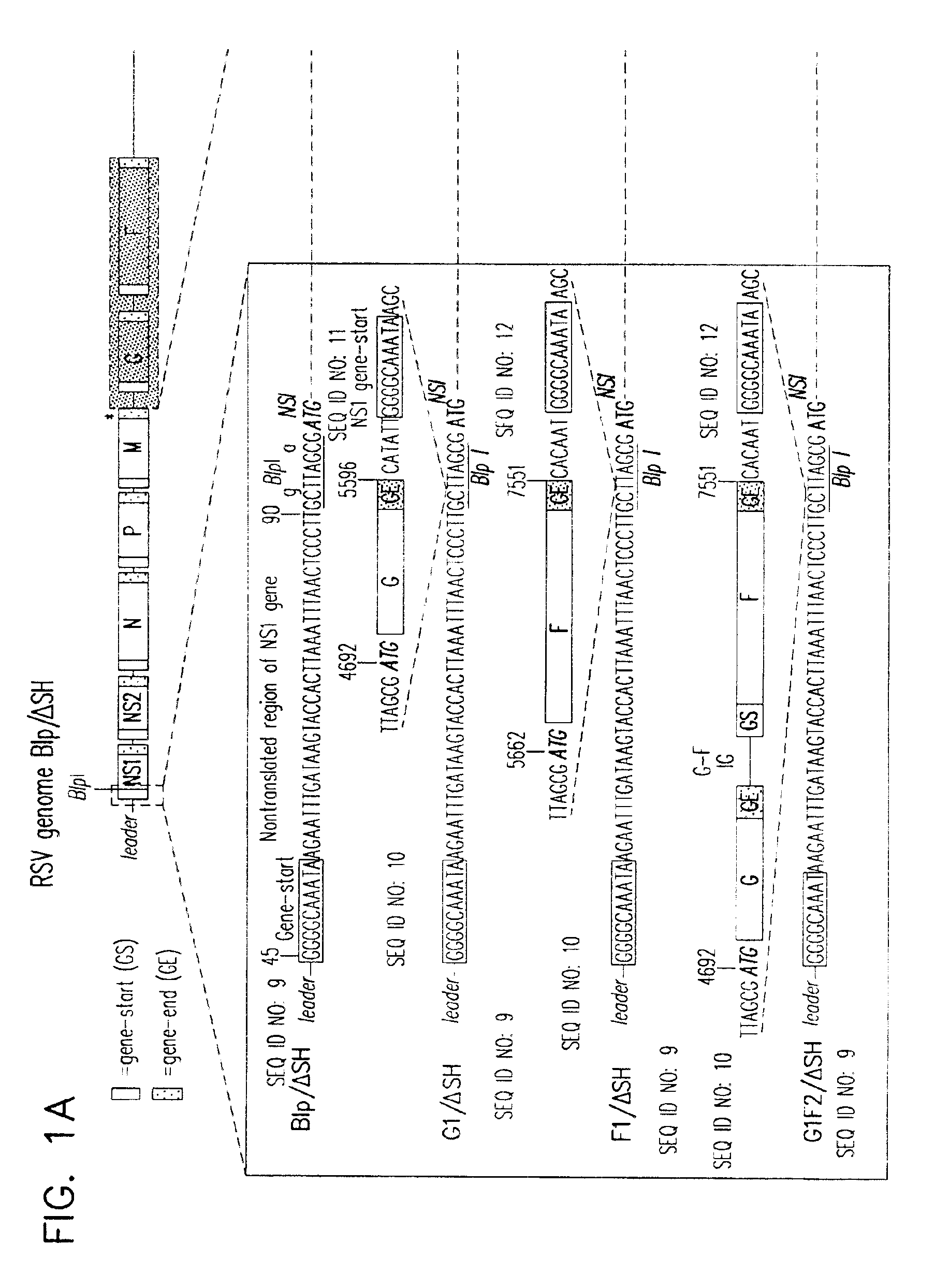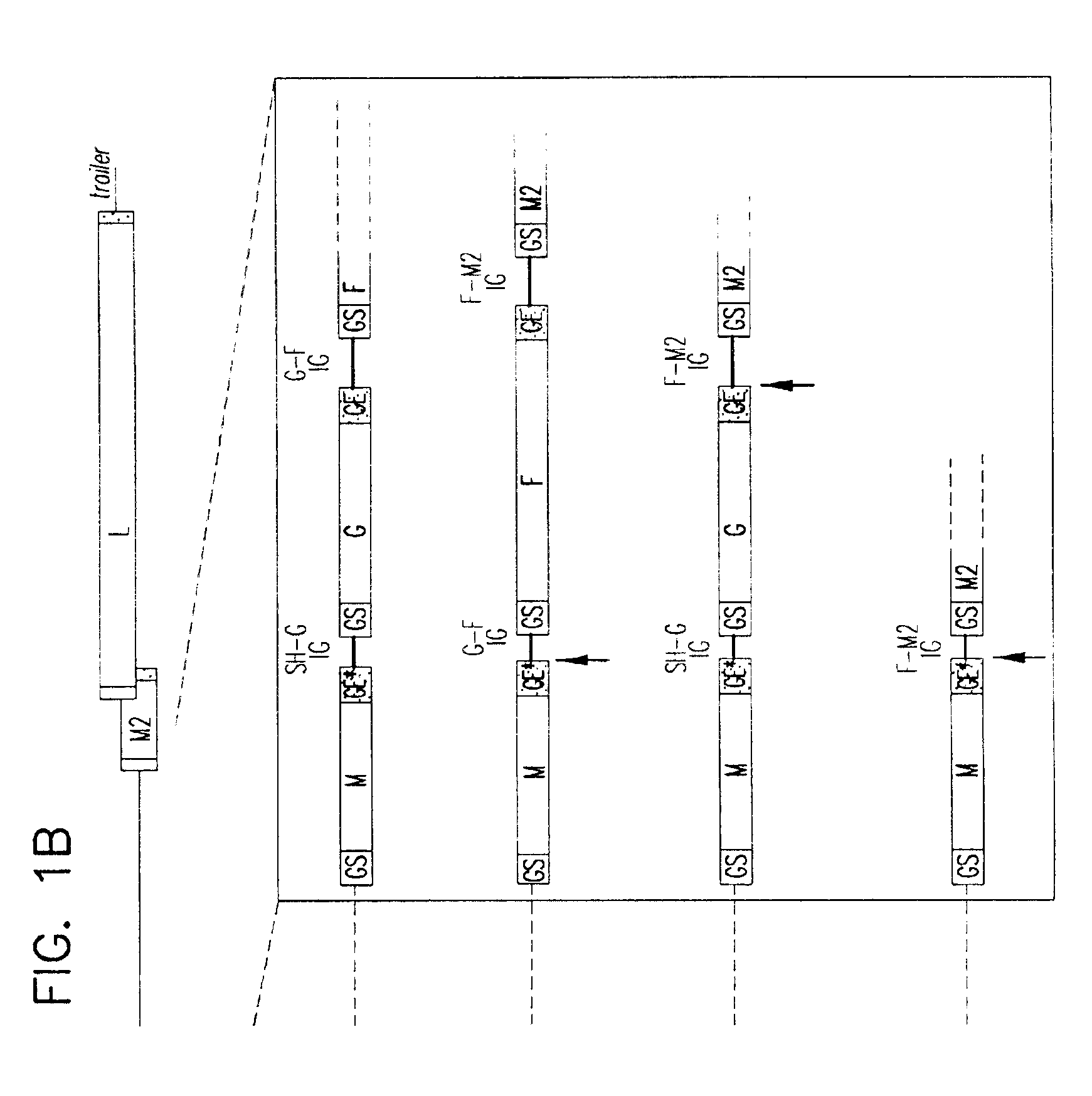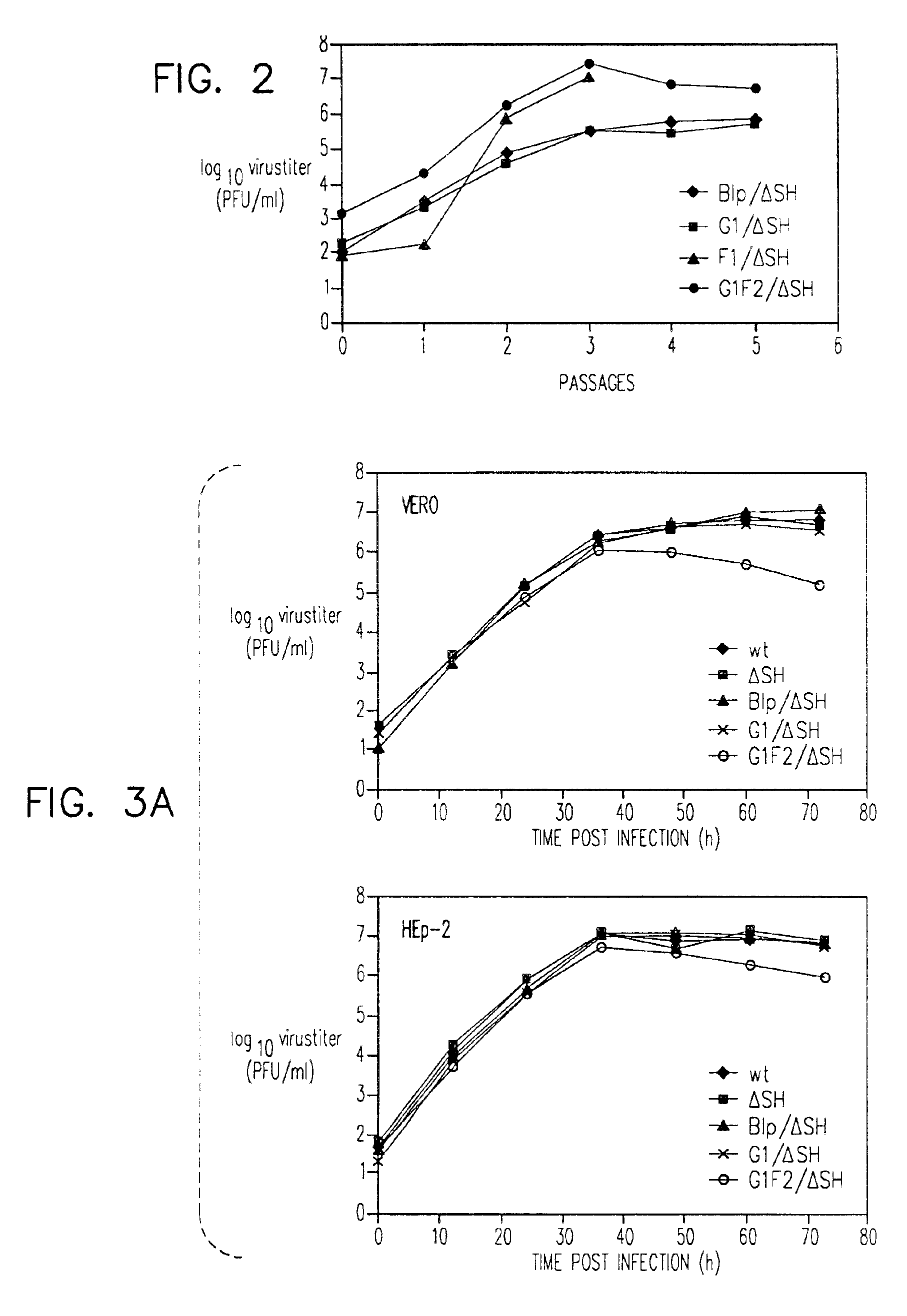Respiratory syncytial virus vaccines expressing protective antigens from promoter-proximal genes
a technology of promoter-proximal genes and respiratory syncytial virus, which is applied in the field of respiratory syncytial virus vaccines expressing protective antigens, can solve the problems of inability to transmit blood-borne viruses, inconvenient use, and ineffective protection, and achieve the effect of effective protection
- Summary
- Abstract
- Description
- Claims
- Application Information
AI Technical Summary
Benefits of technology
Problems solved by technology
Method used
Image
Examples
example i
Construction of Recombinant RSV in which the G and F Genes Have Been Rearranged to a Promoter-Proximal Position Singly or in Combination
[0219]The present example documents rearrangement of the gene order of infectious RSV whereby one or more gene(s) or genome segment(s) encoding an antigenic determinant, exemplified by the G and / or F gene(s), is shifted to a more promoter-proximal position. In one example presented below, the G and F genes are moved coordinately from their wild type gene order positions to occupy rearranged positions 1 and 2 of the recombinant RSV genome or antigenome. This manipulation was performed with a cloned cDNA of RSV antigenomic RNA from which the SH gene was deleted (RSV ASH), as described above (see, e.g., Whitehead et al., J. Virol. 73:3438-3442, 1999, incorporated herein by reference). Wild type RSV from which the SH gene is deleted grows as well or slightly better than complete wild type RSV in vitro, and is slightly attenuated in the upper respiratory...
example ii
Recombinant RSV Incorporating the G and F genes in a Promoter-Proximal Shifted Position in a Highly Attenuated Background
[0241]The gene shift mutations described above were introduced in the context of a genetic background from which the SH gene was deleted. In wild type virus, this deletion modestly improves growth in cell culture, and is moderately attenuating in vivo (Bukreyev et al., J. Virol. 71:8973-8982, 1997; Whitehead et al., J. Virol. 73:3438-3442, 1999, incorporated herein by reference). However, an RSV vaccine virus that is safe for administration to RSV-naive infants and children requires further attenuation than is provided by the ΔSH deletion alone. Therefore, the present example is provided to demonstrate that gene shift mutants of the invention can be recovered successfully in a highly attenuated background.
[0242]Two backgrounds were chosen to exemplify this aspect of the invention, one lacking both the SH and NS2 genes and one lacking the SH, NS1 and NS2 genes. As ...
example iii
Construction of a Chimeric BRSV / HRSV Containing the HRSV G and F Genes in a Promoter-Proximal Shifted Position
[0246]The present example describes construction of an infectious rBRSV / HRSV chimera in which the HRSV G and F genes are substituted into a recombinant bovine RSV (rBRSV) background. The resulting human-bovine chimera contains two genes of HRSV, namely G and F, and eight genes from BRSV, namely NS1, NS2, N, P, M, SH, M2 and L. Additional detail describing a human-bovine RSV construct having the human G and F genes substituted at their corresponding, wild type positions in a bovine RSV background (designated rBRSV / A2) is provided in U.S. patent application Ser. No. 09 / 602,212, filed by Bucholz et al. on Jun. 23, 2000, its corresponding PCT application published as WO 01 / 04335 on Jan. 18, 2001, and its priority provisional U.S. application Ser. No. 60 / 143,132 filed on Jul. 9, 1999, each incorporated herein by reference.
[0247]In addition to the basic substituted glycoprotein co...
PUM
| Property | Measurement | Unit |
|---|---|---|
| temperature | aaaaa | aaaaa |
| volume | aaaaa | aaaaa |
| temperature | aaaaa | aaaaa |
Abstract
Description
Claims
Application Information
 Login to View More
Login to View More - R&D
- Intellectual Property
- Life Sciences
- Materials
- Tech Scout
- Unparalleled Data Quality
- Higher Quality Content
- 60% Fewer Hallucinations
Browse by: Latest US Patents, China's latest patents, Technical Efficacy Thesaurus, Application Domain, Technology Topic, Popular Technical Reports.
© 2025 PatSnap. All rights reserved.Legal|Privacy policy|Modern Slavery Act Transparency Statement|Sitemap|About US| Contact US: help@patsnap.com



